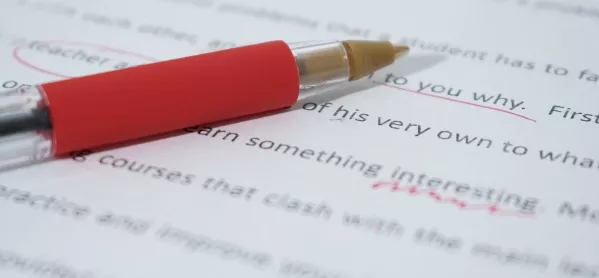- Home
- ‘There is no “correct” answer in English’
‘There is no “correct” answer in English’

“But did the writer really mean all that when she wrote it?” is a question that English teachers hear again and again. Usually it follows a moment of brief elation when a student has suggested an exciting and original interpretation of language that you’d never have thought of yourself. Just as you’re swelling with pride, some little cynic bursts the bubble: “But did the writer…?”
The answer is that it doesn’t matter. Every English graduate was drilled in practical criticism, the “intentional fallacy”, and “the death of the author” in the early days of their very first semester, somewhere between picking up a few Salvador Dali prints from the freshers’ poster sale and learning from their flatmates that their cooking is actually a bit crap.
Some 94 years ago, I. A. Richards was advocating a new way to study English where texts would be divorced from historical or biographical context, as he had observed that his students struggled to derive meaning from a text that was unfamiliar, unnamed or undated. The current GCSE English language specifications do present unfamiliar extracts of texts. They are named, but there is not meant to be any expectation that students should have studied that particular author, or the time period. Nevertheless, much ill-informed criticism of the English reforms and of the GCSE as a post-16-resit qualification would have you believing that students spend the course immersed in depth-studies of Dickens, or heaven-forbid, Shakespeare (who, in truth, doesn’t feature at all in the English language course at all).
In the 1954 essay The Intentional Fallacy, William Wimsatt and Monroe Beardsley made a convincing case that a writer’s intentions are neither accessible nor desirable. They liberated writing, arguing that “it is detached from the author at birth and goes around the world beyond his power to intend or control about it”.
Removing the author
Even if we had access to authors, they would not be able to account reliably for their intention at the moment of creation. The purpose of studying English language is not to play some elaborate detective game. As Wimsatt and Beardsley put it: “Critical enquiries, unlike bets, are not settled in this way. Critical enquiries are not settled by consulting the oracle.”
Since then, other prominent figures of undergraduate English reading lists, such as Stanley Fish and William C. Dowling, have picked up and developed the idea. “Meanings are not extracted, but made,” said Fish. Dowling dismissed the old approaches as “crude intentionalism”. Roland Barthes, hero of roll-necked undergraduates, said that “to give a text an author is to impose a limit on that text”.
Yet the way we are asked to teach English in schools and colleges ignores the critical evolution of the last century for no benefit. I am the first to defend the reformed GCSE from its many detractors who variously long for the return of centre assessment that they can “control” more reliably, or a functionalism that would mask their own lack of imagination. But obsessing over authors just needlessly plays into their hands.
“How does the writer use...?” is a phrase that features repeatedly in GCSE English language, regardless of exam board. It validates students’ anxieties that there is a fixed, “correct” answer that they will never uncover. It can also be bent to arguments about relevance, as students squeezing themselves into the imagined mind of a long-dead writer isn’t going to be much use in any career outside of literary biography.
Celebrate creativity
Instead, analysis and interpretation should be an opportunity to celebrate our learners’ own creativity. However limited an idea about an effect of language might be, that student created it themselves. Viewed like that, the progress we see over a year where a student moves from identification and vague comment, to valid analysis, to interesting interpretations, is not the slow, dull uncovering of some pre-existing genius lying buried and waiting to be discovered by the unworthy. It is the learners in front of us growing in confidence in the exercise of understanding and imagination, and their construction of wonders.
Last week, Google teased the possibilities of its new assistant that speaks more naturally than many real people I’ve encountered, already provoking worry that the economic elite will use the tool to distance themselves further from the working class. There’s also the ongoing panic that fake-news-generating bots are so successful and convincing that they are undermining our democracy. So it’s hard to argue that concern with the figure of the author is as relevant right now, or certainly as urgent, as a concern with the ability to analyse, infer from, interpret or evaluate the language we are faced with every day, whatever its source.
Next opportunity, let’s remove “the writer” from English language once and for all and truly empower our students.
Andrew Otty leads 16-19 English in an FE college. He is an ambassador for education charity Shine @shinetrustuk
Keep reading for just £1 per month
You've reached your limit of free articles this month. Subscribe for £1 per month for three months and get:
- Unlimited access to all Tes magazine content
- Exclusive subscriber-only stories
- Award-winning email newsletters



